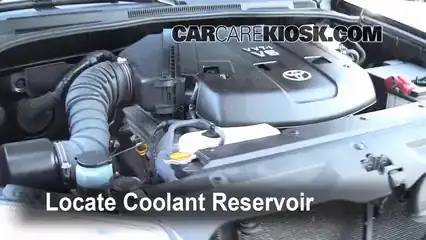If one adds fresh water or new coolant or some additive to the radiator/coolant overflow reservoir, will it end up actively circulating through the system in a reasonably short amount of time (i.e. hours or days)?
While a mostly general question, my car is a 2007 Toyota 4-Runner, and reservoir of interest is the white thing right at radiator cap in center(ish) of pic:
(sorry about the inadvertent marketing...the best pic for me to clarify my Q had all of that embedded already.)
